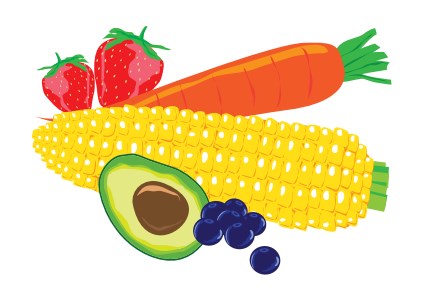By creating a class rainbow representing what students eat in the course of a day, students identify whether they can improve the variety of fruits and vegetables they choose.
Canada’s Food Guide suggests that we “eat at least one dark green and one orange vegetable each day,” but it’s more fun—and more nutritious—to “eat a rainbow!” Eating a rainbow every day means eating at least one fruit or vegetable from each of the colour groups: red, orange/yellow, green, blue and white.
Phytochemicals (literally “plant chemicals”) give fruits and vegetables their colour, taste and smell, and also may affect the severity of diseases such as cancer, stroke or metabolic syndrome.
By "eating the rainbow", we give our bodies the range of vitamins, minerals and phytochemicals that make and keep our bodies healthy. Be wary of trying to get these through dietary supplements, the claims of most pills and shakes aren't supported scientific evidence. Most scientists think that you get the best health benefits if you eat the whole food instead. Plus, it’s more filling!


 copy.jpg)